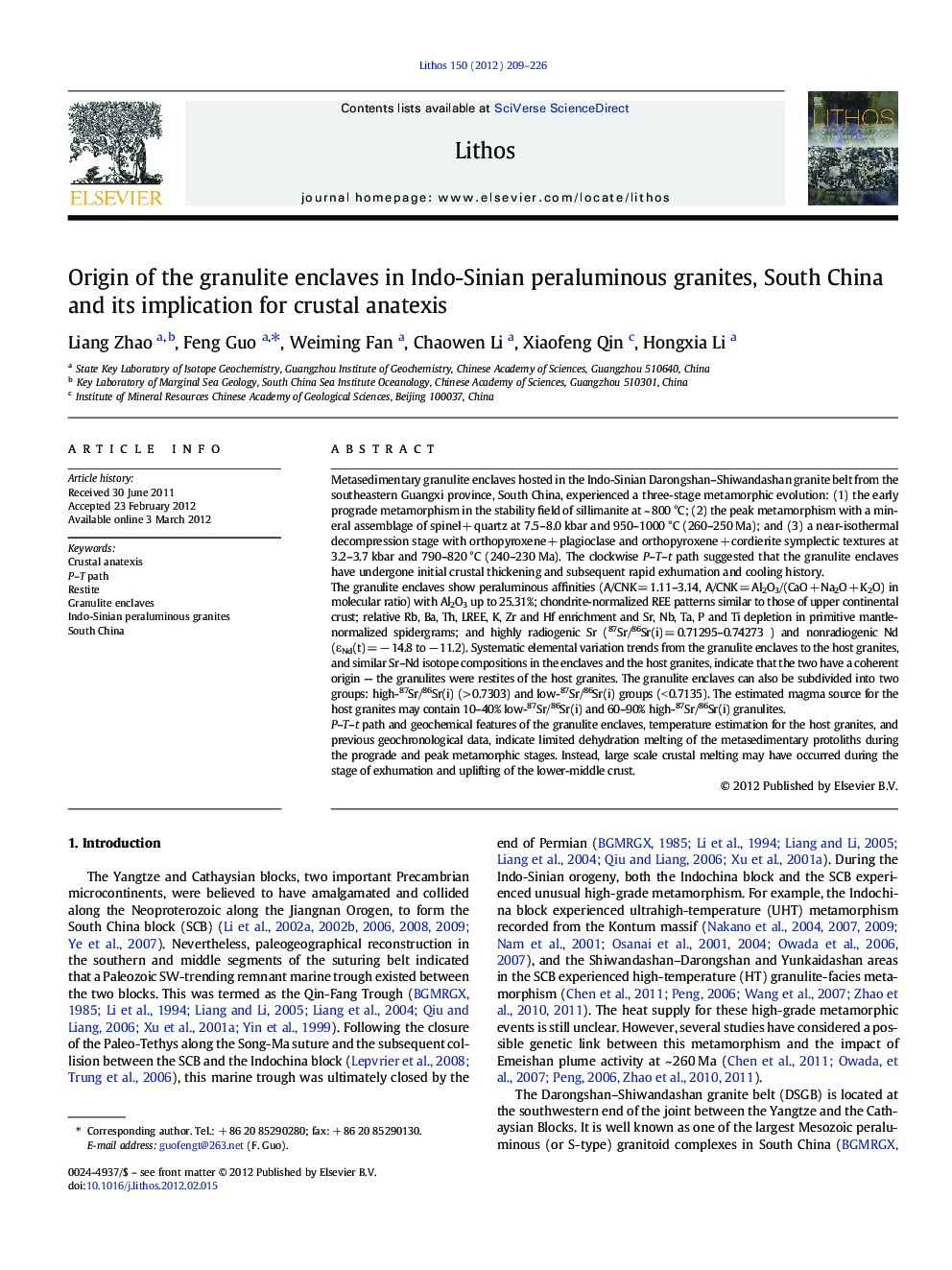| Article ID | Journal | Published Year | Pages | File Type |
|---|---|---|---|---|
| 4716498 | Lithos | 2012 | 18 Pages |
Metasedimentary granulite enclaves hosted in the Indo-Sinian Darongshan–Shiwandashan granite belt from the southeastern Guangxi province, South China, experienced a three-stage metamorphic evolution: (1) the early prograde metamorphism in the stability field of sillimanite at ~ 800 °C; (2) the peak metamorphism with a mineral assemblage of spinel + quartz at 7.5–8.0 kbar and 950–1000 °C (260–250 Ma); and (3) a near-isothermal decompression stage with orthopyroxene + plagioclase and orthopyroxene + cordierite symplectic textures at 3.2–3.7 kbar and 790–820 °C (240–230 Ma). The clockwise P–T–t path suggested that the granulite enclaves have undergone initial crustal thickening and subsequent rapid exhumation and cooling history.The granulite enclaves show peraluminous affinities (A/CNK = 1.11–3.14, A/CNK = Al2O3/(CaO + Na2O + K2O) in molecular ratio) with Al2O3 up to 25.31%; chondrite-normalized REE patterns similar to those of upper continental crust; relative Rb, Ba, Th, LREE, K, Zr and Hf enrichment and Sr, Nb, Ta, P and Ti depletion in primitive mantle-normalized spidergrams; and highly radiogenic Sr (87Sr/86Sr(i) = 0.71295–0.74273 ) and nonradiogenic Nd (εNd(t) = − 14.8 to − 11.2). Systematic elemental variation trends from the granulite enclaves to the host granites, and similar Sr–Nd isotope compositions in the enclaves and the host granites, indicate that the two have a coherent origin — the granulites were restites of the host granites. The granulite enclaves can also be subdivided into two groups: high-87Sr/86Sr(i) (> 0.7303) and low-87Sr/86Sr(i) groups (< 0.7135). The estimated magma source for the host granites may contain 10–40% low-87Sr/86Sr(i) and 60–90% high-87Sr/86Sr(i) granulites.P–T–t path and geochemical features of the granulite enclaves, temperature estimation for the host granites, and previous geochronological data, indicate limited dehydration melting of the metasedimentary protoliths during the prograde and peak metamorphic stages. Instead, large scale crustal melting may have occurred during the stage of exhumation and uplifting of the lower-middle crust.
► The granulite enclaves in the DSGB experienced a three-stage metamorphic history and a clockwise P–T path. ► The granulite enclaves were metasedimentary in origin and were restites of the protoliths after granitic magma extraction. ► The granulite-facies metamorphism was possibly related to the thermal perturbation of the Permian Emeishan plume. ► Large-scale crustal melting occurred mainly during the exhumation and uplifting of the granulite enclaves.
